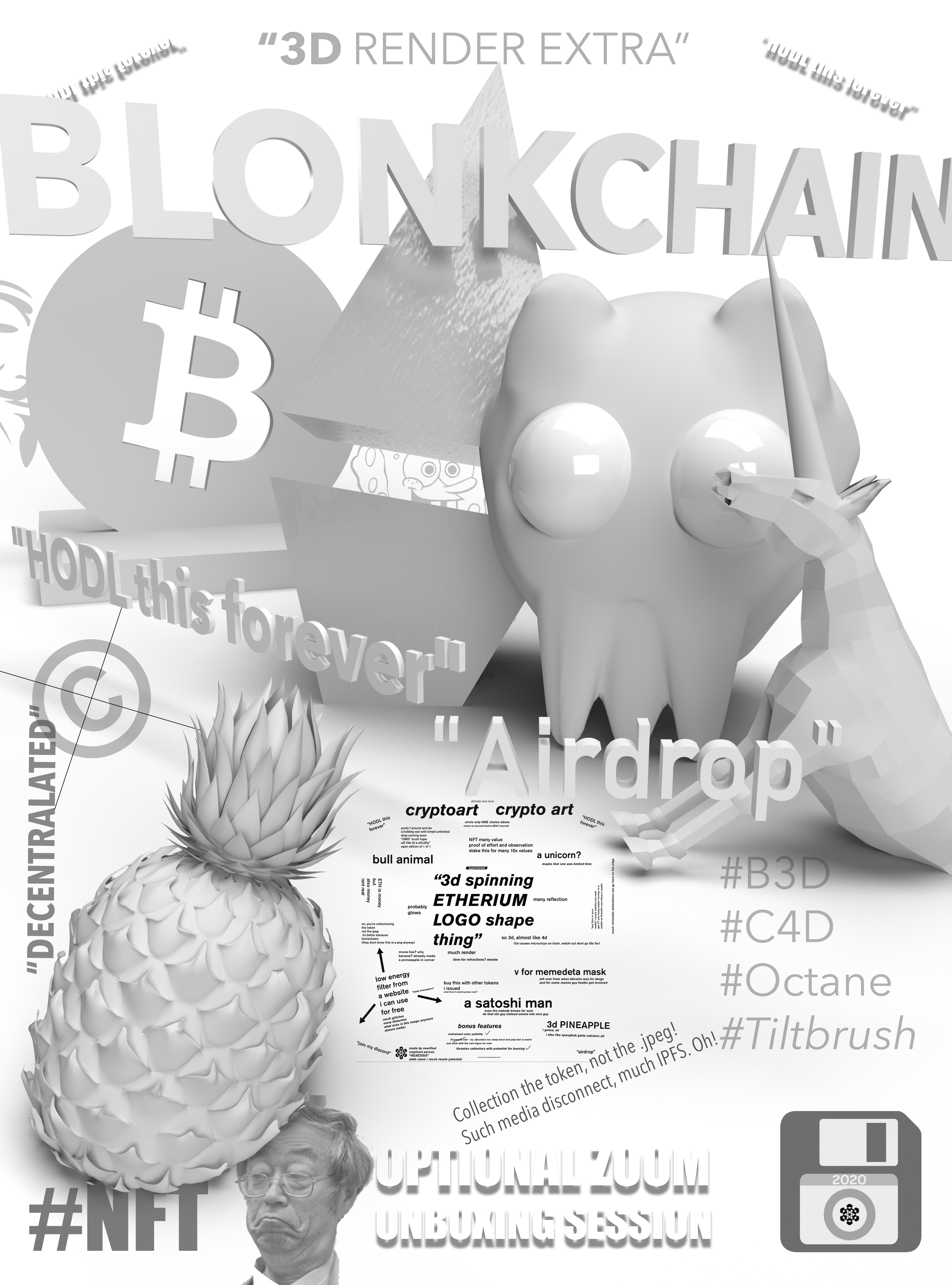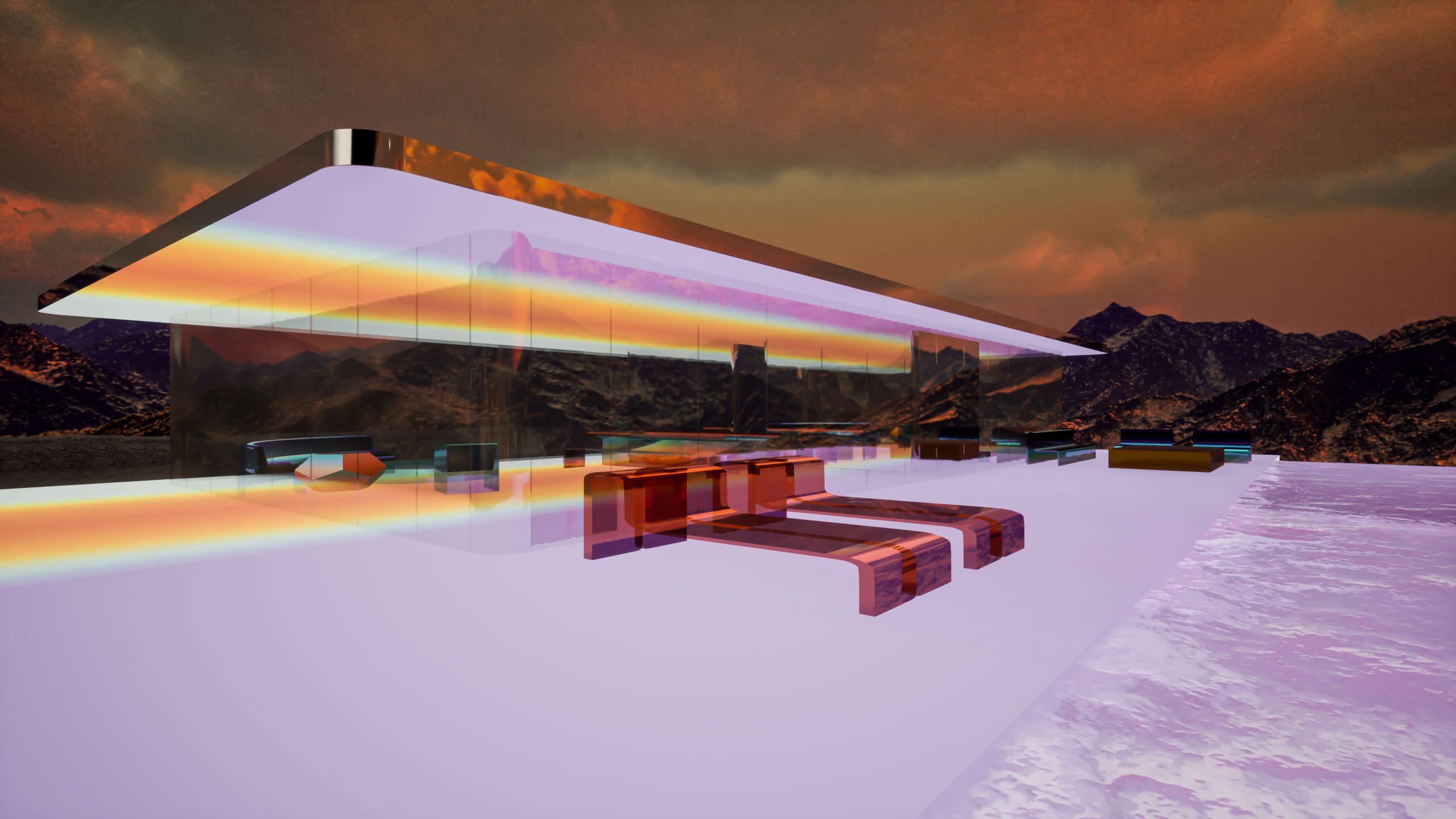SuperRare Labs Senior Curator An interviews ALIENQUEEN about psychedelics, death, and her journey in the NFT space.

Digital Freedom and Fantasy: Q&A with SuperRare Artist Tyler Givens
Above: “data privacy” by stockcatalog licensed under CC BY-SA 2.0
During June 2022, SuperRare Gallery in NYC featured a show centered around two curations. “SuperTrans,” curated by Laurel Charleston, featured eleven transgender, nonbinary, and gender nonconforming artists in the Web3 Space. “ICONS,” featured picks from Nicole Ruggiero and Sam Clover (Planttdaddii), and showed the works of a bevy of talented LGBTQ+ creators. Tyler Givens, one of the “ICONS” artists, sat down with SuperRare curator Mika Bar on Nesher to speak on his inspirations, his creative process, and his hopes for the future of queer representation in the NFT world.
Artist’s Bio:
Tyler Givens was born in 1994 in Los Angeles. He now lives and works in New York. He received a BA in Photography & Imaging from the NYU Tisch School of the Arts in 2016. Givens was a member of Thom Browne’s creative team. He then joined the studio of Santiago & Mauricio before turning focus to his full-time studio practice.
Most recently, he presented a series of works on paper at several notable galleries, including: The Fairest; Berlin, James Fuentes Online; New York, and Duplex; New York. Givens also displays NFTs at the SuperRare and Superchief Galleries. Givens’ NFTs are viewable on SuperRare, Foundation and Zora.
Q&A with the artist:
MBON: What kind of stories do you set out to tell in your work? What inspires and informs your visual world-building?
TG: Within the world of Neo Eterna, the universe that my characters gave birth to, I aim to tell stories of liberation. The characters in this universe prioritize joy and absolute freedom; making whatever choices necessary to protect their way of existing. Often this manifests through the destruction of the old – in order to make room for the new.
Most of my inspiration comes from the existential questions posed by my favorite animes; including Revolutionary Girl: Utena or X1999. I draw inspiration from the flamboyant fashion imagery from the 1990s and 2000s. Additionally, I grew up in the Church, so Christian iconography and biblical references often trickle in. In this setting, extremes of good and evil were taught to me from a young age, but the choices we make in life are a lot more complex.
MBON: What does freedom mean to you? How does it relate to fantasy? How do themes of freedom and fantasy play out in your works?
TG: My work is heavily informed by my lived experience. For me, freedom means to unapologetically walk in my power. I spent many years of my life hiding my light in order to fit the boxes and molds placed upon me. Because of these constrictions, I found the early metaverses as a tool for escape, digitally wandering the pixel landscapes of WoW, Habbo Hotel, or Gaia Online every evening after school. In these spaces I could alter my appearance on a whim with fantastical garb, and essentially become whatever I felt like. However, I also discovered darker sides of the internet.
Around the same time, I discovered fashion photography, and grew obsessed with the works of Tim Walker and Nick Knight (shown below). Fantasy became my main outlet for that dose of freedom in many ways. It allowed me to explore facets of myself without judgment, and to break down the shame I carried. The same goes for my creative practice. A lot of my work is self-portraiture: playing dress up and presenting myself in new forms; all in an effort to unlearn. In all of my different mediums (digital, drawings on paper, screenwriting); these explorations of freedom and fantasy can feel existential, sometimes doom-bound, but I feel those moments are necessary in self-actualization.


MBON: Who are some of the artists you especially love and respect in the space? What is it about their work that resonates with you?
TG: Moonsundiamond, Niall Ashley, Moyosore Briggs, and Diana Sinclair to name a few. They are all poets who look at the world from a similar lens as my own. I’ve had the pleasure to speak with and listen to each of them discuss their practices, and I appreciate the many layers that exist in their works both in the physical output and in their intentions.
MBON: Do you work mostly during the day or the night? Are you a full time artist at the moment or do you have a day job as well?
TG: I work mostly during the day, though I love drawing at sunset. Right now I am a full time artist with the support of my lovely partner. I made the decision at the height of the pandemic when I had unemployment as a safety net (LOL), and it’s been an intense though rewarding journey.
MBON: What advice do you have for artists starting out?
TG: I think because we see an abundance of work; on our timelines and feeds everyday, there’s a subconscious pressure to over-perform. I put so much pressure on myself – to produce and to lay the foundations for all of my bigger dreams. Between developing my first feature-length screenplay, generating digital works for the NFT space, and continuing my physical practice; I stretched myself thin. Over the last year, I’ve experienced my lowest lows to-date. I’ve felt only recently that I am making my way out of the trenches. The biggest lesson I have learned is to take time to do nothing and find balance. Also, go outside if you can!
MBON: Can you tell us about the piece you showed during the show at the SuperRare gallery titled “PROLOGUE”? I see the two angels as welcoming visitors through a gate or portal, but what does the piece mean to you?
TG: I knew that when I made it onto SuperRare (shouts out to Nicole Ruggiero and Sam Clover), I wanted to create work that was a deeper reflection of my spiritual journey and that pulled from the same codes as my drawings on paper. My early works in this space reflect my inner child’s joy and whim. I love those pieces and will continue to create from that lens within Neo Eterna. However, right now there’s so much more I want to explore within myself.
“PROLOGUE” is most importantly a prayer to my benevolent ancestors for their strength, guidance and protection. Over the last year, I was slammed with life events that made me feel chased by Death. Aided by the breaking of familial bonds; my mental health tanked. Life felt very out of balance and sinister. I wanted “PROLOGUE” to honor this intense journey, which, despite the chaos, resulted in feeling more whole and balanced.
“PROLOGUE” is most importantly a prayer to my benevolent ancestors for their strength, guidance and protection.
-Tyler Givens
TG: The piece opens with my character performing a ritualistic dance as the viewer ascends. Dance is the most essential part of my ideation process – my greatest revelations emerge when lost in movement. The angel above them holds two flowers, representing life, and the final two angels wait on guard ready to protect the star above. The star in this context is a symbol for my light and legacy. The piece is framed with a heart in each corner, representing love.
MBON: What are the next steps for you? Are there any upcoming projects you’d like to share with us?
TG: I am gearing up to participate in my first artists’ fellowship with a collective whose works and intentions I admire. Over the course of my time there I am excited to learn from mentors and discover new frontiers within my practice.
Aside from that, I am developing the world of Neo Eterna with my brother, and soon I’ll release my first proper collection of NFTs called, “MAKE ME A HERO, BABY.” The collection comprises eleven works with five editions each, and is inspired by Disney’s “Hercules”. Oh, and keep an eye out for “POSSESSION,” my next piece for SuperRare.
MBON: What do you see in store for queer representation in the NFT space? What would you like to see more of?
TG: This will take time, but my goal is to garner resources to help other artists and storytellers from my queer community realize their dreams to the fullest extent. I hope the next generation will learn to do the same, and we will see more queer NFT artists with the resources and power needed to build new systems. I would love to live in a world where our work is also celebrated outside the bounds of Pride Month.
Arianne Lapidus is a writer living and working in New York City. She has worked in several artistic mediums, from costume to graphic design. Arianne is a new entrant to the world of Web3 but finds that it aligns perfectly with her fixation on the intersection of technology, artistry, and design. You can find her musings on Web3 on Twitter: @arianne_tweets.
Tech






Out of the Vault and onto the Chain: the Evolving Nature of Provenance
SuperRare editor Oli Scialdone considers the social experience of provenance and its relationship with community in the Web3 space.
Curators' Choice











Curated Conversations: ALIENQUEEN
SuperRare Labs Senior Curator An interviews ALIENQUEEN about psychedelics, death, and her journey in the NFT space.

















